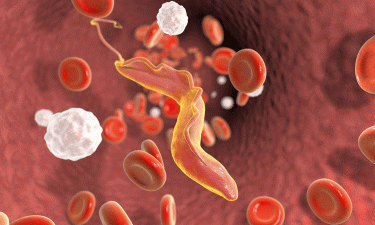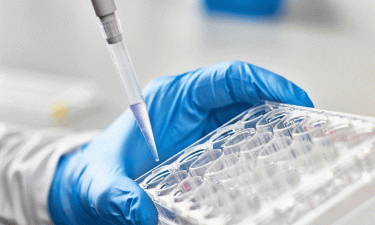The challenges of hit-to-lead in drug discovery
Posted: 7 October 2019 | Victoria Rees (Drug Target Review) | No comments yet
A study that identified 12 novel compounds that may prove valuable against new drug targets for leishmaniasis and Chagas disease was not without complication. Here, we discuss the findings but also the challenges the researchers reported in their hit-to-lead study.


With the recent news that University of Bath researchers have identified promising cancer drug candidates using high-throughput screening methods, it is clear that hit-to-lead processes are successful in the drug discovery field.1
Hit-to-lead is a method used by researchers to identify compounds that can eventually be used against therapeutic targets. Using a high-throughput screening process, scientists can identify promising lead compounds before developing them further into drug candidates.2
Although researchers utilise this method often, it is not without limitations. Here, we discuss how hit-to-lead methods can be used in drug discovery and their associated challenges.
Identifying leads
Researchers can narrow down their search for drug candidates using hit-to-lead techniques that reveal which compounds are most active against a target. Our ability to generate biological data libraries far exceeds our ability to test them,3 meaning that there is an abundance of available data with no use, as of yet.


Of note, it is important that researchers conducting high-throughput screens choose the most relevant in vitro assay to improve translation to in vivo and clinic results because significant differences may exist in drug sensitivity between different life-cycle stages of the parasite. In the present study, the researchers used high-throughput primary screens and then counter screened against the reduced set of screen hits to further down-select to higher priority compound hits. For L. donovani an additional assay to assess trypomastigote cidality was employed to further characterise the value of the compound hits
The outcome
The results of a drug discovery programme often rest upon the selection of appropriate lead generation strategies. The use of high-throughput screening in this study leant itself to the identification of eventual drug candidates, as it usually has a 50 percent success rate in delivering hits that can be clinically applicable.2
…it is important that researchers conducting high-throughput screens choose the most relevant in vitro assay to improve translation to in vivo”
The researchers reported that, of the 21 compounds that were hits, nine were found to have known kinetoplastid activity.
Overall, the researchers successfully identified 12 novel chemotypes with low- to sub-molecular activity against the targets. Of these, seven were active against both T. cruzi and L. donovani, The researchers say that these compounds may be valuable tools to identify new drug targets.
Challenges of the research
Despite the successes of hit-to-lead methodology in drug discovery, there are challenges to overcome.
One of the issues the authors report is ensuring that the most relevant in vitro assay was selected to improve translation to in vivo effectiveness. This is important to ensure the effectiveness of the compound. However, the researchers also had to use assays with sufficient throughput and cost-effectiveness. During hit-to-lead optimisation, scientists look to improve target-binding qualities and maximise their potency. However, this often leads to compounds with high molecular weights, which may


A further challenge was ensuring that the in vitro assays were staged within the conditions of the disease, including parasite lifecycle stage and relevant host cells. Otherwise, the molecules would not replicate their effectiveness when applied to the disease in clinical trials.
Of note, for the L. donovani screening, compound availability restrictions limited profiling of all chemotypes.
Therefore, despite facing several challenges during this study, the researchers were still able to identify leads.
Conclusion
This study successfully identified and characterised 12 novel chemical series, seven of which were active against both T. cruzi and L. donovani and may prove valuable for identifying new drug targets. However, it was not without its challenges; correct assay selection, assay handling, recreating disease conditions and having enough compounds to screen were all complications and limitations the researchers faced.
The authors say that they have disclosed these hit structures and associated activity with the goal to “contribute to the drug discovery community by providing unique chemical tools to probe kinetoplastid biology and as hit-to-lead candidates for drug discovery.”
The results of the Scripps Research study can be found here.
References
Article: McNamara C, Roquero I, et al. Novel chemical starting points for drug discovery in leishmaniasis and Chagas disease [Internet]. International Journal for Parasitology: Drugs and Drug Resistance. 2019 [cited 2 October 2019]. Available from: https://www.sciencedirect.com/science/article/pii/S2211320718301507#!
- Lloyd M, Petrova Y, et al. Identification of novel small-molecule inhibitors of α-methylacyl-CoA racemase (AMACR; P504S) and structure-activity relationships [Internet]. Bioorganic Chemistry. 2019 [cited 2 October 2019]. Available from: https://www.sciencedirect.com/science/article/abs/pii/S0045206819303980?dgcid=author
- Holenz J, Stoy P. Advances in Lead Generation [Internet]. Bioorganic & Medicinal Chemistry Letters. 2019 [cited 2 October 2019]. Available from: https://www.sciencedirect.com/science/article/pii/S0960894X18309351
- Leavell M, Kaufmann-Malaga B, Singh A. High-throughput screening for improved microbial cell factories, perspective and promise [Internet] Current Opinion in Biotechnology. 2020 [cited 2 October 2019]. Available from: https://www.sciencedirect.com/science/article/pii/S095816691930045X
- Dong G, Sheng C, Wang S. Structural simplification: an efficient strategy in lead optimization [Internet] Acta Pharmaceutica Sinica B. 2019 [cited 2 October 2019]. Available from: https://www.sciencedirect.com/science/article/pii/S221138351930320X
Related topics
Assays, High-Throughput Screening (HTS), Hit-to-Lead, Lead Generation, Research & Development, Screening
Related conditions
Chagas disease, Leishmaniasis
Related organisations
Scripps Research, University of Bath








